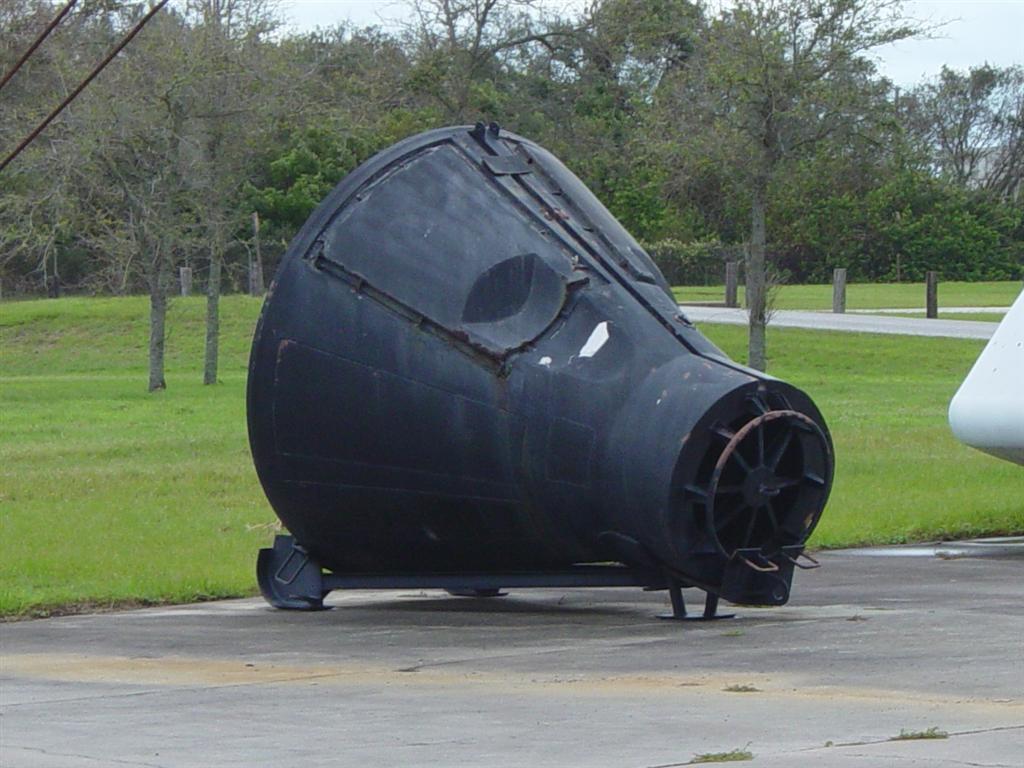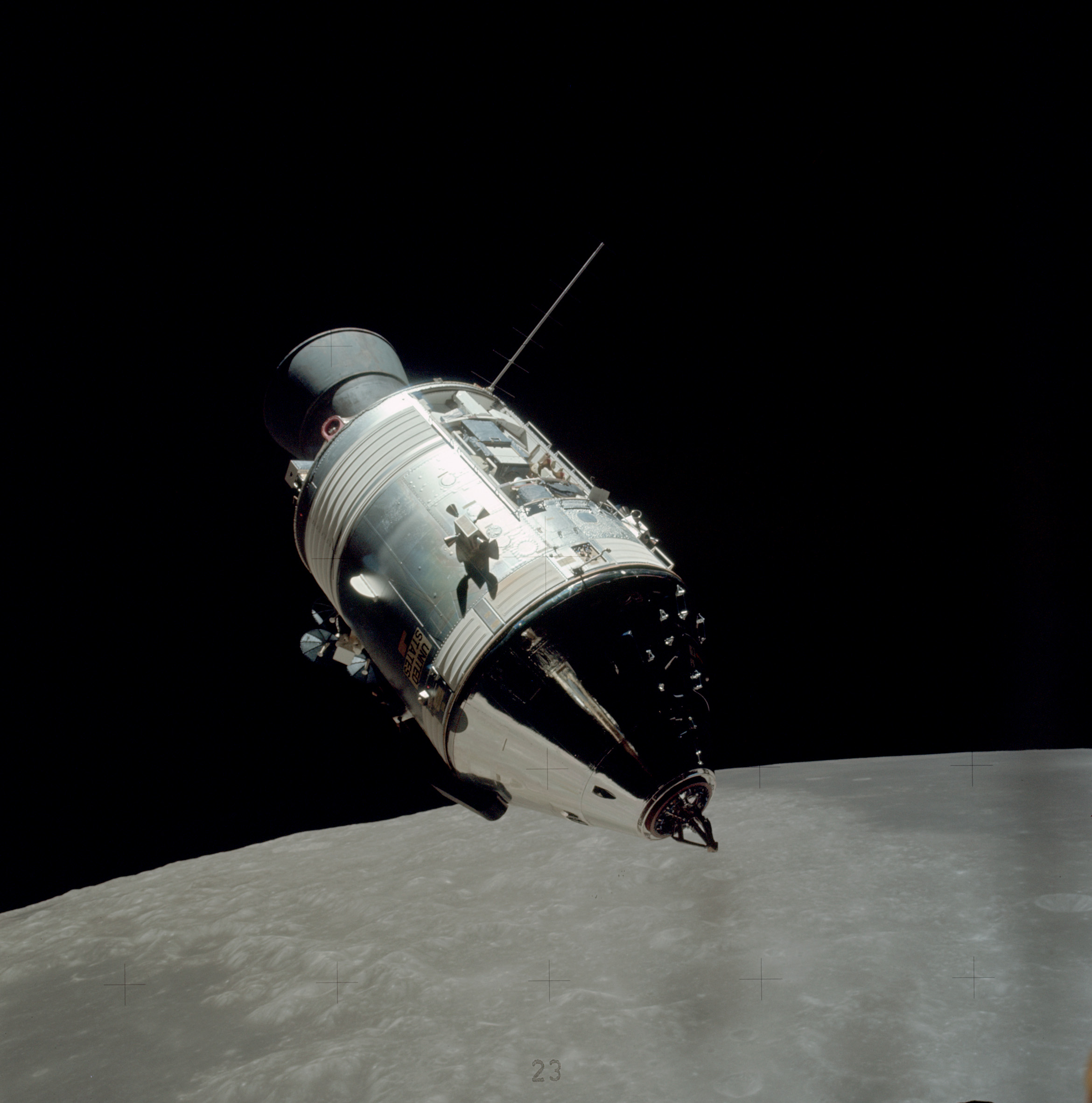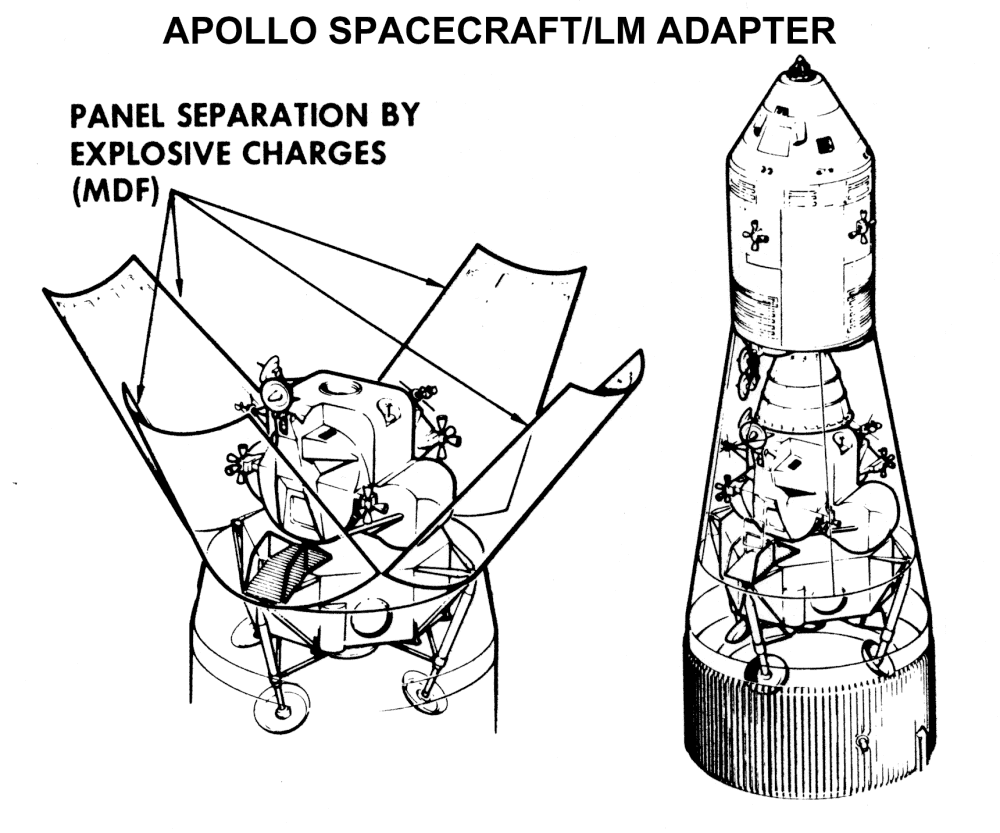|
A-104 (SA-8)
AS-104 was the fourth orbital test of a Boilerplate (spaceflight), boilerplate Apollo spacecraft, and the second flight of the Pegasus (satellite), Pegasus micrometeoroid detection satellite. It was launched by SA-8, the ninth Saturn I carrier rocket. Objectives The primary mission objective was to demonstrate the launch vehicle's iterative guidance mode and to evaluate system accuracy. The launch trajectory was similar to that of mission AS-103. The Saturn launch vehicle SA-8 and payload were similar to those of mission AS-103, except that a single reaction control engine assembly was mounted on the boilerplate Apollo service module, service module (BP-26). The assembly was instrumented to acquire additional data on launch environment temperatures. This assembly also differed from the one on the AS-101 mission in that two of the four engines were of a prototype configuration instead of all engines being simulated. Launch This was the first nighttime launch in the Saturn I serie ... [...More Info...] [...Related Items...] OR: [Wikipedia] [Google] [Baidu] |
NASA
The National Aeronautics and Space Administration (NASA ) is an independent agency of the US federal government responsible for the civil space program, aeronautics research, and space research. NASA was established in 1958, succeeding the National Advisory Committee for Aeronautics (NACA), to give the U.S. space development effort a distinctly civilian orientation, emphasizing peaceful applications in space science. NASA has since led most American space exploration, including Project Mercury, Project Gemini, the 1968-1972 Apollo Moon landing missions, the Skylab space station, and the Space Shuttle. NASA supports the International Space Station and oversees the development of the Orion spacecraft and the Space Launch System for the crewed lunar Artemis program, Commercial Crew spacecraft, and the planned Lunar Gateway space station. The agency is also responsible for the Launch Services Program, which provides oversight of launch operations and countdown management f ... [...More Info...] [...Related Items...] OR: [Wikipedia] [Google] [Baidu] |
Boilerplate (spaceflight)
A boilerplate spacecraft, also known as a mass simulator, is a nonfunctional craft or payload that is used to test various configurations and basic size, load, and handling characteristics of rocket launch vehicles. It is far less expensive to build multiple, full-scale, non-functional boilerplate spacecraft than it is to develop the full system (design, test, redesign, and launch). In this way, boilerplate spacecraft allow components and aspects of cutting-edge aerospace projects to be tested while detailed contracts for the final project are being negotiated. These tests may be used to develop procedures for mating a spacecraft to its launch vehicle, emergency access and egress, maintenance support activities, and various transportation processes. Boilerplate spacecraft are most commonly used to test crewed spacecraft; for example, in the early 1960s, NASA performed many tests using boilerplate Apollo spacecraft atop Saturn I rockets, and Mercury spacecraft atop Atlas rocke ... [...More Info...] [...Related Items...] OR: [Wikipedia] [Google] [Baidu] |
1965 In The United States
Events from the year 1965 in the United States. Incumbents Federal Government * President: Lyndon B. Johnson ( D-Texas) * Vice President: ''vacant'' (until January 20), Hubert Humphrey ( D-Minnesota) (starting January 20) * Chief Justice: Earl Warren (California) * Speaker of the House of Representatives: John William McCormack ( D-Massachusetts) * Senate Majority Leader: Mike Mansfield ( D-Montana) * Congress: 88th (until January 3), 89th (starting January 3) Events January * January 1 – The ship '' S.S. Catala'' is driven onto the beach in Ocean Shores, Washington, stranding her. * January 4 – President Lyndon B. Johnson proclaims his "Great Society" during his State of the Union Address. * January 19 – The unmanned ''Gemini 2'' is launched on a suborbital test of various spacecraft systems. * January 20 – President Lyndon B. Johnson begins his full term. Hubert Humphrey is sworn in as Vice President of the United States. February * Februa ... [...More Info...] [...Related Items...] OR: [Wikipedia] [Google] [Baidu] |
Spacecraft Launched In 1965
A spacecraft is a vehicle or machine designed to fly in outer space. A type of artificial satellite, spacecraft are used for a variety of purposes, including communications, Earth observation, meteorology, navigation, space colonization, planetary exploration, and transportation of humans and cargo. All spacecraft except single-stage-to-orbit vehicles cannot get into space on their own, and require a launch vehicle (carrier rocket). On a sub-orbital spaceflight, a space vehicle enters space and then returns to the surface without having gained sufficient energy or velocity to make a full Earth orbit. For orbital spaceflights, spacecraft enter closed orbits around the Earth or around other celestial bodies. Spacecraft used for human spaceflight carry people on board as crew or passengers from start or on orbit ( space stations) only, whereas those used for robotic space missions operate either autonomously or telerobotically. Robotic spacecraft used to support scientific ... [...More Info...] [...Related Items...] OR: [Wikipedia] [Google] [Baidu] |
Pad Abort Test-2 (Apollo)
Pad Abort Test 2 was the follow-on second abort test to Pad Abort Test 1 of the Apollo spacecraft . Objectives Apollo Pad Abort Test 2 was the fifth of six uncrewed Apollo missions that flight tested the capability of the launch escape system (LES) to provide for safe recovery of Apollo crews under critical abort conditions. This flight was the second test of the launch escape system with the abort initiated from the launch pad. The launch escape system included qualified launch escape and pitch motors and was equipped with canards to orient the vehicle aft heat shield forward prior to tower jettison and parachute deployment. A boost protective cover was also provided. The spacecraft was BP-23A, a boilerplate Apollo command module that had been used on mission A-002 A-002 was the third abort test of the Apollo spacecraft. Objectives Mission A-002 was the third in the series of abort tests to demonstrate that the launch system would perform satisfactorily under selected criti ... [...More Info...] [...Related Items...] OR: [Wikipedia] [Google] [Baidu] |
A-003
A-003 was the fourth abort test of the Apollo spacecraft. This particular flight is notable because during the abort test flight, an actual abort situation occurred, and further proved the Apollo launch escape system (LES). The CM was successfully pulled away from the malfunctioning Little Joe booster and it landed safely under parachutes. Objectives Apollo mission A-003 was the fourth mission to demonstrate the abort capability of the Apollo launch escape system. The purpose of this flight was to demonstrate launch escape vehicle performance at an altitude approximating the upper limit for the canard subsystem. The launch vehicle was similar to the one used for mission A-002 except that the propulsion system consisted of six Algol motors. The uncrewed flight test vehicle consisted of an Apollo boilerplate command and service module (BP-22) and a launch escape system similar to the one used on the previous mission. The command module Earth landing system configuration was refin ... [...More Info...] [...Related Items...] OR: [Wikipedia] [Google] [Baidu] |
S-IV
The S-IV was the second stage of the Saturn I rocket used by NASA for early flights in the Apollo program. The S-IV was manufactured by the Douglas Aircraft Company and later modified by them to the S-IVB, a similar but distinct stage used on the Saturn IB and Saturn V rockets. The S-IV stage was a large LOX/LH2-fueled rocket stage used for the early test flights of the Saturn I rocket. It formed the second stage of the Saturn I and was powered by a cluster of six RL-10A-3 engines. Each one of the engines supplied of thrust for a total of about . The cryogenic LH2 (liquid hydrogen) and LOX (liquid oxygen Liquid oxygen—abbreviated LOx, LOX or Lox in the aerospace, submarine and gas industries—is the liquid form of molecular oxygen. It was used as the oxidizer in the first liquid-fueled rocket invented in 1926 by Robert H. Goddard, an applica ...) tanks were separated by a common bulkhead. The forward bulkhead of the LOX tank formed the aft bulkhead of the LH2 tank. T ... [...More Info...] [...Related Items...] OR: [Wikipedia] [Google] [Baidu] |
Apollo Service Module
The Apollo command and service module (CSM) was one of two principal components of the United States Apollo spacecraft, used for the Apollo program, which landed astronauts on the Moon between 1969 and 1972. The CSM functioned as a mother ship, which carried a crew of three astronauts and the second Apollo spacecraft, the Apollo Lunar Module, to lunar orbit, and brought the astronauts back to Earth. It consisted of two parts: the conical command module, a cabin that housed the crew and carried equipment needed for atmospheric reentry and splashdown; and the cylindrical service module which provided propulsion, electrical power and storage for various consumables required during a mission. An umbilical connection transferred power and consumables between the two modules. Just before reentry of the command module on the return home, the umbilical connection was severed and the service module was cast off and allowed to burn up in the atmosphere. The CSM was developed and built f ... [...More Info...] [...Related Items...] OR: [Wikipedia] [Google] [Baidu] |
Pegasus (satellite)
The Pegasus Project was a NASA initiative to study the frequency of micrometeoroid impacts on spacecraft by means of a constellation of three satellites launched in 1965. All three Pegasus satellites were launched by Saturn I rockets, and remained connected with their upper stages. The Pegasus satellites were named for the winged horse of Greek mythology and was first lofted into space by a NASA Saturn I rocket on February 16, 1965. Like its namesake, the Pegasus satellite was notable for its "wings", a pair of -long, -wide arrays of 104 panels fitted with sensors to detect punctures by micrometeoroids at high altitudes, in support of the Apollo Program to send manned lunar landing missions starting by 1970. Micrometeoroids were believed to be potentially hazardous to the Apollo crew if they could puncture the spacecraft skin. The sensors successfully measured the frequency, size, direction and penetration of scores of micrometeoroid impacts. The satellite also carried sample pr ... [...More Info...] [...Related Items...] OR: [Wikipedia] [Google] [Baidu] |
Apollo Spacecraft
The Apollo spacecraft was composed of three parts designed to accomplish the American Apollo program's goal of landing astronauts on the Moon by the end of the 1960s and returning them safely to Earth. The expendable (single-use) spacecraft consisted of a combined command and service module (CSM) and an Apollo Lunar Module (LM). Two additional components complemented the spacecraft stack for space vehicle assembly: a spacecraft–LM adapter (SLA) designed to shield the LM from the aerodynamic stress of launch and to connect the CSM to the Saturn launch vehicle and a launch escape system (LES) to carry the crew in the command module safely away from the launch vehicle in the event of a launch emergency. The design was based on the lunar orbit rendezvous approach: two docked spacecraft were sent to the Moon and went into lunar orbit. While the LM separated and landed, the CSM remained in orbit. After the lunar excursion, the two craft rendezvoused and docked in lunar orbit ... [...More Info...] [...Related Items...] OR: [Wikipedia] [Google] [Baidu] |
Apollo (spacecraft)
The Apollo spacecraft was composed of three parts designed to accomplish the American Apollo program's goal of landing astronauts on the Moon by the end of the 1960s and returning them safely to Earth. The expendable (single-use) spacecraft consisted of a combined command and service module (CSM) and an Apollo Lunar Module (LM). Two additional components complemented the spacecraft stack for space vehicle assembly: a spacecraft–LM adapter (SLA) designed to shield the LM from the aerodynamic stress of launch and to connect the CSM to the Saturn launch vehicle and a launch escape system (LES) to carry the crew in the command module safely away from the launch vehicle in the event of a launch emergency. The design was based on the lunar orbit rendezvous approach: two docked spacecraft were sent to the Moon and went into lunar orbit. While the LM separated and landed, the CSM remained in orbit. After the lunar excursion, the two craft rendezvoused and docked in lunar orbit, ... [...More Info...] [...Related Items...] OR: [Wikipedia] [Google] [Baidu] |




